| THE TOP TEN (as featured in Metro, 23/12/2020)
1. RÓISÍN MURPHY: RÓISÍN MACHINE
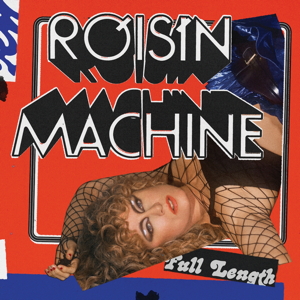
At once a tribute to free-flowing disco concept albums, a potted history of the lusher end of deep house and techno, and above all, a supreme set of sensuous emoto-bangers, this triumphant, cohesive solo record from the former Moloko singer has only one flaw: it ends too soon.
2. BOB DYLAN: ROUGH AND ROWDY WAYS
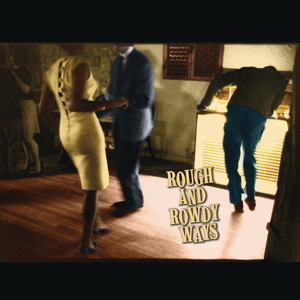
Not just his best since whenever you think he was last great, but a superb Bob Dylan album by any measure at all. In its world-weariness, sly mischief and immersion in the breadth of American popular song, it’s also one he surely couldn’t have made at any time before now.
3. SAULT: UNTITLED (BLACK IS)/UNTITLED (RISE)
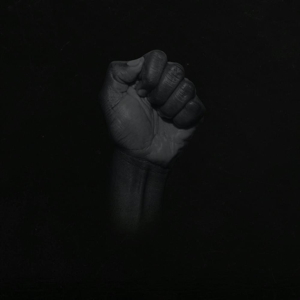
The mysterious collective released two extraordinary albums within weeks of one another. It’s impossible to choose between them in their richness and power as they roam through black British soul, rare groove and trip hop, and adapt these to the BLM era. So just hear them both and marvel.
4. FIONA APPLE: FETCH THE BOLT CUTTERS
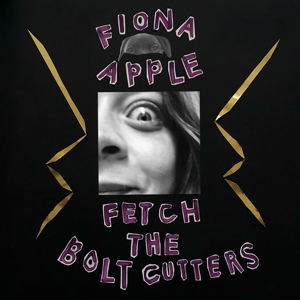
Fiona Apple was a confessionalist long before it was hip, and she’s back to deliver a masterclass. This jagged, staccato, fearless, alkaline, unblinking, unnerving despatch from the wilder borders of the singer-songwriter idiom gives no f***s and takes no prisoners.
5. PHELIMUNCASI: PHELIMUNCASI 2013- 2019

The South African trio’s gqom sound truly bristles with the shock of the new. The propulsive, hyper-minimal production and the repetitive raps are percussive and electrifying; to the Western ear they seem to stretch back into traditional rituals and forward into the next century.
6. ANNIE: DARK HEARTS

A different kind of Scandi Noir, this; a gleaming, melancholic dance-pop journey through the past, picking out pools of light on the night’s wet pavements. Annie, once so wry and insouciant, is now all about the feels, and Dark Hearts shimmers with atmosphere and the pangs of memory.
7. JUNGLEPUSSY: JP4

Afro-futurism goes cyber-punk. The production has a thick and eerie ambience, redolent of both Nineties Bristol and the avant-garde minimalism of Junglepussy’s native New York, set off by the rapper’s at once fierce and curiously charming flow.
8. TAYLOR SWIFT: FOLKLORE
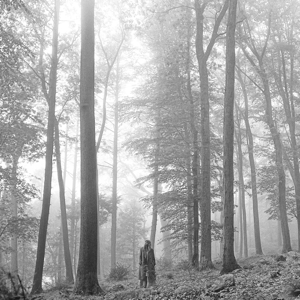
Not only did Taylor Swift all but make a Lana Del Rey record, she made a tremendous one. Abetted by The National’s Aaron Dessner, Folklore is the first Swift album that fully justifies its length, unfolding with wistful grace across a leisurely autumnal hour.
9. NIHILOXICA: KALOLI

In a boon year for British jazz, it has made no venture more remarkable than this hook-up with a percussion ensemble from Kampala, Uganda. The resulting tribal techno hybrid is a dense and thrilling revelation.
10. PORRIDGE RADIO: EVERY BAD

Seldom nowadays does British indie rock truly startle. Step forward Dana Margolin’s Brighton quartet, and her scratchy, compulsive, looping songs. It’s as if the voices in your head formed a band, and turned out to be brilliant at it.
And the 40 remaining albums from the longlist, in alphabetical order (compiled from excerpts from my reviews over the year):
COURTNEY MARIE ANDREWS: OLD FLOWERS
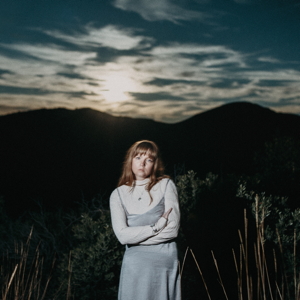
Andrews got her music business break as a touring member of emo stalwarts Jimmy Eat World. Her solo music could hardly be further away, style-wise, but emotional it certainly is, and then some. She writes indie-country songs and performs them with a sparse, stately melancholy. Old Flowers is a slow knockout of a record, taking its time to floor you. Its power builds not only over its course but with each new play.
THE AVALANCHES: WE WILL ALWAYS LOVE YOU

Inspired by the love between broadcaster Ann Druyan and cosmologist Carl Sagan, the outstanding third album from the Australian masters of sampledelia plays, loosely, upon the theme of signals sent out into the universe, echoes of our presence after we’re gone. Where they used to rely on sampled voices, The Avalanches have here worked with a highly diverse array of guest vocalists, which affords the album a dizzying variety matched by their own sense of musical adventure. It has the feel of a long, enrapturing DJ set, a finely woven mesh of luxuriance and light, evolving so smoothly and cohesively that its progress from soulful chillout-room balm to lush disco-funk and clubbified shoegaze seems entirely natural. “What will survive of us is love,” wrote Philip Larkin; that, too, is the cardinal message of this ravishing record.
BC CAMPLIGHT: SHORTLY AFTER TAKEOFF
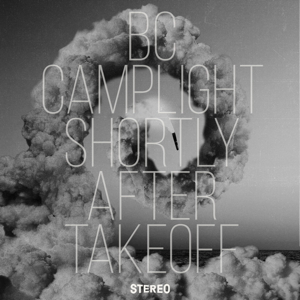
Time spent listening to Brian Christinzio sing, or talk, is never time wasted, and his fifth album as BC Camplight (on which he does both) is his most intriguing yet. Pitched somewhere between the confessional-mundanity-as-art of Mark Kozelek and John Grant’s transmutation of pain into blissful melodicism, and plainly influenced by the great Harry Nilsson, Shortly After Takeoff is an unflinching yet often comical confrontation of its creator’s mental illness.
MATT BERRY: PHANTOM BIRDS
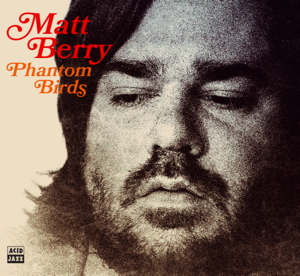
A time capsule, new to us but old in spirit. You can hear looming over much of it the shade of a very specific Bob Dylan – the Dylan of John Wesley Harding, speaking in riddles and parables over plain, gentle folk-rock, and of Nashville Skyline, and steel guitars and homey love songs. There’s also a definite ring of the Michael Nesmith school of country-rock and of The Byrds’ more psych-tinged ventures into that terrain. There’s a folk-pop hommage to Todd Rundgren, and songs distinctly reminiscent of the Antipodean harmonic indie styles of The Go-Betweens and Ed Kuepper, and the lyrical surrealism of Robyn Hitchcock. More importantly, the songs themselves are allusive, faintly wistful toe-tappers, much better than a mere pop-detective exercise.
JAMES DEAN BRADFIELD: EVEN IN EXILE
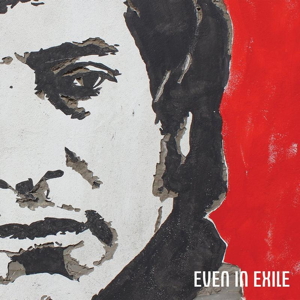
Not only one of the most likeable people in pop music, but also – evidently, if unassumingly – one of the most driven, Bradfield has brought his A game. Nicky Wire’s brother, the playwright and poet Patrick Jones, has provided a set of lyrics commemorating Chilean artist and activist Victor Jara, murdered during the fascist coup of 1973. Bradfield in turn has woven a powerful set of songs around them, and from these has constructed – largely on his own, layer by layer in the studio – a very fine album indeed. He cites John Cale, Rush, Pink Floyd and Nico among its inspirations, and you can hear why. It works as narrative, as fable, and as polemic, carrying you along its surging and ebbing currents for its entirety.
PHOEBE BRIDGERS: PUNISHER
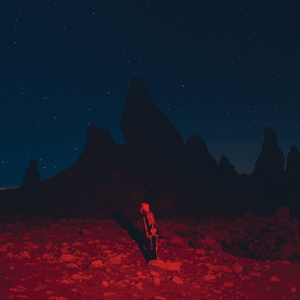
Bridgers is what they call an old soul; just 25, but making music that sings with the weight of years. Punisher is only her second solo album, yet it’s hard to imagine how this Californian indie/folk artist could have better realised her curious, eerie combination of rawness and delicacy. Her idiosyncratically detailed songs, which recall the I-am-a-camera verité technique of Mark Kozelek, cut close to the bone, with morbid dexterity.
CHARLI XCX: HOW I’M FEELING NOW
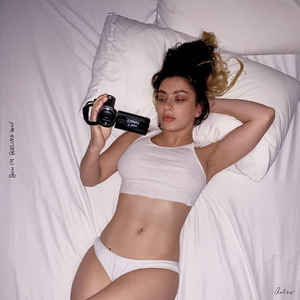
Her previous album, Charli, placed a formica sheen over its turbulent depth; her lockdown album has a percussive immediacy. You might take it for one more relationship album; certainly there is plenty of what sounds like lust, amour fou, recrimination and contemplation here. Listen more closely and you’ll be reminded at every turn the context is enforced separation by universal circumstance; friends, lovers, crushes parted. This is a record of video chat sex, of yearning for physical intimacy to match the emotional, of the sheer strangeness of it all. Who better to have made it than an artist who already had such a knack for expressing disconnection.
CATHERINE ANNE DAVIES & BERNARD BUTLER: IN MEMORY OF MY FEELINGS
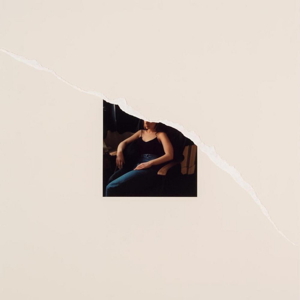
Chrissie Hynde never made a full album with Mick Ronson, but we no longer have to imagine how that might have sounded – and it could hardly have been better than this. Davies may be a vocal dead ringer for Hynde, but her musical imagination is quite different; limpid power ballads, baroque glam and swirling chamber pop are her forte. Butler, whose own strongest musical partnerships have covered similar territory, makes an ideal foil. This is a lustrous LP full of aching melancholia, hefty crescendos, expertly judged guitar heroics and, above all, belting quasi-Seventies pop tunes.
THE DEARS: LOVERS ROCK

There’s always a slight sense of Stars In Their Eyes with The Dears. Murray Lightburn, their songwriter and lead singer, definitely had a touch of the Morrisseys on their breakthrough second LP, No Cities Left (2003), and five years later the tremendous Missiles pitched camp adjacent to both Arcade Fire, and TV On The Radio. This time, they kick off by seemingly channelling John Grant and Radiohead on the same song, and wind up with a number that resembles an indiefied Steely Dan. The great thing about The Dears is that Lightburn’s writing is good enough and singular enough to impose its own character on any near-impression, while he and Natalia Yanchak confect distinctive, ominous, towering wedding-cake arrangements, usually with a pair of broken figurines atop them. Lovers Rock pulses with dark energy.
DION: BLUES WITH FRIENDS
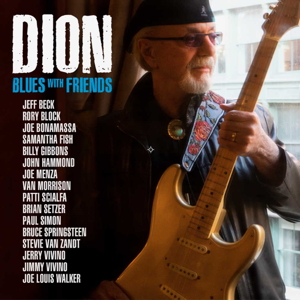
You might at first glance suspect this is an archetypal Old White Dude Retreads A Well Worn Theme album. But don’t be misled by the title. Yes, a few of the 14 tracks plod by in hackneyed, trad fashion (*cough* the one with Van Morrison *cough*), but they’re very much the exceptions. This is a strong collection of original songs loosely united by a wide-ranging blues backdrop, and featuring some top-notch guest appearances (most, but not all, instrumental) from, well, top-notch guests. Dion’s voice, that high tenor of quite extraordinary sensitivity and timbre, is as compelling as ever.
BAXTER DURY: THE NIGHT CHANCERS
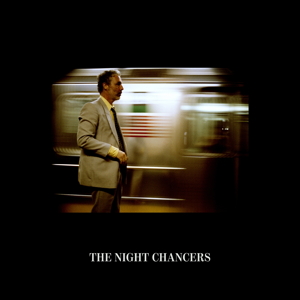
Dury fils is within hailing distance of uniqueness, which is no small achievement, and entertaining with it, which is what really counts. When The Night Chancers does spark flickers of recognition, it reminds you of the Leonard Cohen of I’m Your Man, with its basic yet moody electronic production, its canopy of female vocals, and its louche, weathered style; or of Shaun Ryder, chucking about instinctive, allusive gutter poetry as if it were a mixture of ball bearings and confetti. These ten slender tracks form a contemporary picture of things going from bad to worse, usually in small and ugly ways, for stalkers and bloggers and ravers and those titular chancers. If you’ve missed out on Dury so far, now’s the time to catch up with him, on this brief, appetising and crafty slice of low-life.
EDIKANFO: THE PACE SETTERS

Available again after almost 40 years, this album shows you why Edikanfo were such stars of highlife, that exhilarating, upbeat style led by guitars and horns, and strongly suggestive of Latin rhythms. It is half an hour of pure, spirit-lifting joy, mostly instrumental, perfectly poised between traditional and modern, linking Akan tribal beats to the lusher end of disco. So tight and focused were the band, so complete their arrangements, that producer Brian Eno found he had little to add. His chief contribution was his name, which drew attention to the band in Europe and America. They were poised to go on tour there when a coup shut down both their government sponsorship, and Accra’s nightlife – the latter being suppressed for years. As we sit indoors of an evening, we may console ourselves that at least it won’t, probably, be that long before we can hit the town. Let’s hope the music’s this good when we do.
ELISON 404: PEBBLEDASH

Massive Attack and Tricky had so strong an influence upon left-field electronica and indie that their singular contribution to British rap is often overlooked. But not by Elison 404, a subset of the Eastbourne-bred and London-based collective 404 Guild, who with the outstanding Pebbledash have created one of the records of the year so far – sinuous, moody, lyrically artful, and deep as an ocean trench.
FLEET FOXES: SHORE
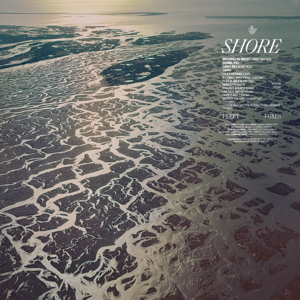
The doyens of American indie-folk have surprise-released only their fourth album in 12 years. Even if you were previously unswayed by them, you’d do well to give this one a shot. It’s an immaculate record, its tempered fragility redolent of all that was sweetest and most pastoral about the California pop in the late Sixties, then wistfully melancholic come the early 70s. Their finest, most assured and most immediate set of songs yet.
FRAZEY FORD: U KIN B THE SUN
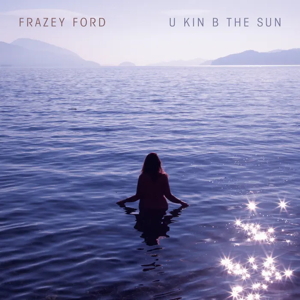
Ford is best known as a founder member of The Be Good Tanyas, who sound like Appalachian angels, all cool air and rustic mountain streams. Ford, solo, sounds like a badass Memphis mama who’s seen some things. Her music is loose, louche, lived-in and, with her idiosyncratic slurred delivery, at times bordering on the unintelligible. But even when you can’t make out what she’s singing, you can sure as hell feel it. U Kin B The Sun is a slow-burning set that feels richer with each hearing. Country-soul is Ford’s metier, a honky-tonk sensibility moving with an unhurried R&B strut. Her indomitable spirit and mastery of her form shine through every note.
THE FOUR OWLS: NOCTURNAL INSTINCT

In every regard, this British hip hop group are a Nineties-style project, starting with their formation as a collective of already practising artists using themed alter egos under the guidance of a gifted producer: Leaf Dog, aka Deformed Wing. His luxuriant tracks, with their steady pulse and their deep soul and jazz samples, provide his band-mates with just the right platform for the thing that really marks the Owls out: their lyrical flow. Big Owl, Rusty Take-Off and Bird T are funny, insightful, philosophical, and as invigoratingly British in their character and terms of reference as any of their more fêted counterparts on the grime scene. When it comes to their American inspirations, they understand the distinction between respect and deference; that, along with its sheer quality, makes this record a treat. |
|
|
|
And the 40 remaining albums from the longlist, in alphabetical order (continued):
EZRA FURMAN: SEX EDUCATION OST
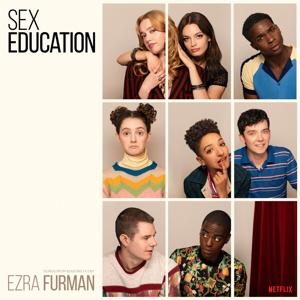
Seldom can there have been so ideal a match between a soundtrack artist and what appears on the screen as that of Ezra Furman and Sex Education. Furman is the brightest and best thing in U.S. indie right now, while the show is a sharp Day-Glo teen comedy-drama that is American in every way but its setting, transplanted to a curious netherworld in which only the accents are British. For all its sexual frankness, it is at heart – and it has a lot of heart – a show about confusion, identity, self-determination and discovery; these are likewise the wellsprings of Furman’s music. Separated from the show and heard in their own right, these songs add up to a remarkably cohesive piece of work. This is a tremendous talent in full bloom, playing music that, like the show, is full of heart and charm.
GRIMES: MISS ANTHROPOCENE
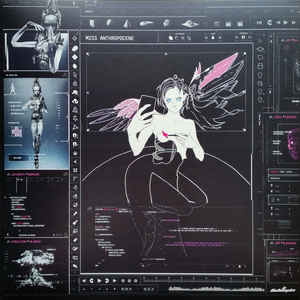
What do you do when you become not only a star but a style; not only a celebrity but a meme? If you’re Canadian art-pop artist Grimes you just keep moving forward. Miss Anthropocene is so fluid, so varied, so easy on the ear, that you might overlook how Grimes has taken yet another of her nonchalant giant strides. Whether it’s the scintillating spookiness of Darkseid, on which Taiwanese rapper Aristophanes 貍貓 (a.k.a. 潘PAN) serves as a human cut-up device, or the warped, woozy electro-folk tune Delete Forever, or IDORU’s sweet, ringing harmonics, or the girlish sadomasochistic bounce of Violence, she’s both one step away and one step ahead of all the things that sound sorta like her. They’re close, but she takes the cigar - and the biscuit.
THE HESHOO BESHOO GROUP: ARMITAGE ROAD
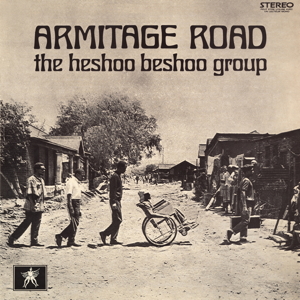
There is nothing about this 1970 South African jazz gem that is not delightful, from the cover image, an early spoof of the Abbey Road sleeve given satirical heft by the Apartheid-era squalor of the surroundings and principal composer Cyril Magubane’s wheelchair, to the wonderfully deft and inventive music that makes this so long overdue a reissue. It wears its obvious debt to John Coltrane lightly, and it has a rollicking verve and essential funkiness entirely its own. An absolute joy of a record.
HOLLOW SHIP: FUTURE REMAINS

Well, if ever there was a time to consider what the ruins of our society will look like to coming generations, now would be it. That’s a thread that runs through the first album by this Swedish quintet, whose mix of psych rock and Afro-funk recalls the glorious heyday of the Edgar Broughton Band. Future Remains is a terrific debut, rich in ideas, grooves and atmosphere.
MARY LATTIMORE: SILVER LADDERS

Have you been worried that there’s not enough harp in today’s popular music? Then worry no longer, because Los Angeles’ Mary Lattimore is here to prove that Joanna Newsom isn’t the only game in town. Recorded in Cornwall with Neil Halstead of Slowdive, and tempered with washes of guitar and synth, this set of instrumentals is unfailingly pretty, at times enchanting, and seldom if ever chocolate-box. The ten-minute centrepiece, Til A Mermaid Drags You Under, is a thing of wonder.
LIRAZ: ZAN

The decades since World War II have seen a sweep of ethnic cleansing across the Middle East and North Africa, as centuries-old Jewish communities are forced from their homes. Those countries’ loss is Israel’s gain – as evidenced by singer and actress Liraz Charhi, born there to parents who fled the Iranian revolution. Zan is true underground pop, recorded with Iranian musicians who dare not reveal their names, combining the supple sway of Farsi music with bouncy electro to zesty, sometimes bedazzling effect.
MODERN STUDIES: THE WEIGHT OF THE SUN

The third LP from this quartet of multi-instrumentalists is a truly rich and variegated thing. Its keynote is the dual lead vocals of Emily Scott and Rob St John, one of those pairings where the twin elements set off one another just so – Scott’s limpid mezzo-soprano moulding itself against St John’s grainy baritone to produce an effect you can feel as much as hear. Around this is wrought by very sure hands a kind of deeply textured chamber pop, sombre in atmosphere but light in touch. The songs unfold like small, fully realised pieces of expressionist cinema: ornate, precisely crafted, steeped in shadows with details picked out by precise illumination.
NINES: CRABS IN A BUCKET

If you’re enjoying the way British hip hop is steering itself towards a slow, lush, dramatic style reminiscent of the mid-Nineties, then the third LP from Church End’s Nines should be right up your postcode. As before, his measured, relaxed delivery sits well with mid-tempo, melodic, bass-heavy backing tracks. This time around, he’s clearly making a bid for the big time, with a host of guests both local and global, and a cohesive, smooth record with the potential to play to any audience.
THE ORB: ABOLITION OF THE ROYAL FAMILIA

Some of Alex Paterson’s revolving cast of collaborators – Youth, Steve Hillage, Jah Wobble, Miquette Giruady – have returned for this latest outing. And it’s a doozy. It opens with a lovely number redolent of Philly disco-soul and Marvin Gaye, glides into a delicious funky house tune that might have graced Creation Records’ classic 1991 Keeping The Faith compilation, then expands outwards from there. It’s full of things that are familiar from The Orb’s heyday – the droll use of samples, the oblique polemicism, the juxtaposition of the cosmic with the mundane – and also stuffed with fresh ideas. Abolition of The Royal Familia is The Orb at their splendid Orb-iest.
PERFUME GENIUS: SET MY HEART ON FIRE IMMEDIATELY

Mike Hadreas, whose art found its genesis in a response to homophobic bullying, occupies a space between John Grant and Anohni, fashioning queer testimonies by turns delicate and brashly dramatic, sometimes based around spare keyboard arrangements, at others whipping up a synth-pop storm. Set My Heart On Fire Immediately is as intense, driven and passionate as its title demands. And in On the Floor, it includes a perfect Eighties dancefloor pop hit that never was.
BRIGID MAE POWER: HEAD ABOVE WATER

London-born, much travelled, Power is a discreetly radical country-folk artist whose songs feel deeply lived in and whose voice is steeped in experience. Combined, they radiate a hushed, concentrated power, through intensity rather than volume; the quieter they get, the stronger it feels. Her third album is a kind of intimate memoir, not so much confessional as plain and forthright, and it’s enthralling.
PRETENDERS: HATE FOR SALE

If you didn’t know it was 2020 – if there were any way not to know it’s 2020 – then the new Pretenders album might have you convinced you’d time-warped back to the early 1980s, when The Pretenders were among the best, and coolest, and most exciting rock groups on the planet. Because this is prime – and primal – stuff from Chrissie Hynde and company. Hate For Sale fair crackles its way through as fine a set of songs as has appeared under Hynde’s imprimatur since the classic Learning To Crawl. From the cacophonous false start of its title number to the unblinking, unsentimental confrontation of hurt in closing piano ballad Crying In Public, this album is everything you could want from this band: raw, close, wiry, punchy, electric, instantly memorable.
GWENIFER RAYMOND: STRANGE LIGHTS OVER GARTH

Recorded in a Brighton basement during one lockdown, and released just in time for the next, the second album by this Welsh acoustic folk guitar wizard is eerie, intense and at times claustrophobic, yet she assures us this is a coincidence, even with such titles as Hell For Certain. Either way, this collection of spellbinding solo instrumentals is a tour de force from a remarkable talent.
RUN THE JEWELS: RUN THE JEWELS 4
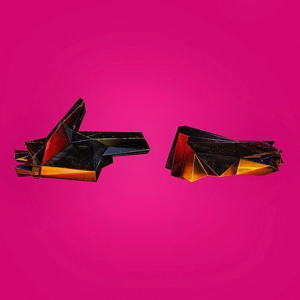
The fourth instalment in the ongoing collaboration between El-P and rapper/activist Killer Mike is a heavyweight bruiser of a record – angry, funny, inventive, varied, compressed, propulsive; all the things that have made RTJ the somewhat unlikely breakout stars of alternative hip hop. It often feels like a commentary on the protests that followed its recording.
SMOKE FAIRIES: DARKNESS BRINGS THE WONDERS HOME

Two voices, two guitars; the voices separating then twining around one another with the strength and tension of flaxen chord; the guitars rough, close and urgent, as if they were clawing and scrabbling at your door while spirits ululate beyond. The songs are dominated by minor keys, and by an atmosphere thick with mystery and witchcraft. There are wild and supernatural things moving here, with a kind of tender, pulsating savagery. Darkness Brings The Wonders Home lives up to its title, all shadows, storms and beguilement. This is beautiful music with blood on its glistening teeth.
STAR FEMININE BAND: STAR FEMININE BAND

The story behind Star Feminine Band is so positive, so pure and so inspiring that you read it with fingers crossed it isn’t a sugar-coated version. It begins in Natitingou, a city in Northern Benin, where Andrè Balaguemon, a musican and community worker with a strong feminist ethic, organised musical training sessions for girls via a local radio station. “In our region, women are marginalised, humiliated, also beaten,” he has said. “I simply wanted to show the importance of women in the societies of North Benin by forming a female orchestra.” A heartwarming back story doesn’t guarantee great music. The girls themselves have done that, familiarising themselves from scratch with their instruments, and melding into a exhilarating ensemble. Their first, self-titled album bursts with energy and invention, combining the highlife and Congolese sounds long popular in West Africa with a wedge of Western psych/garage sensibility, and a hint of The Jackson Five.
TOOTARD: MIGRANT BIRDS

If you’re not closely familiar with the Middle Eastern dancefloor scene of the 1980s, join the club, so to speak. This Golan Heights duo’s tribute to the music of the era suggests it was a joyous thing. Their melding of electro-pop with Arabic phrases and scales glides and gambols and dances on air with the lightest of feet.
YVES TUMOR: HEAVEN TO A TORTURED MIND

It tells you something about the Miami producer’s sense of iconoclasm that he was born with the surname Bowie, and dispensed with it in favour of . . . that. From its ominous false-start opener, Gospel For A New Century, with its echoes of Bernard Herrmann film scores, to the closing Funkadel-ish space-soul of A Greater Love, his fourth album is crammed with woozy, genre-dissolving, ever-inventive kicks.
U.S. GIRLS: HEAVY LIGHT

Much has changed for Meg Remy over her 13 years as the creative force behind U.S. Girls. If you set the blurred and rudimentary lo-fi of her abrasive one-woman debut, Introducing, against the sharp delineation and intricate, collaborative construction of Heavy Light, you might wonder at their being the work of the same artist. But the essence of what Remy does, which is to render into sound a worm’s-eye view of the personal as the political, remains much as it ever was. Remy has always foregrounded percussion, while a varied assembly of backing singers sweetens the pot with both harmony and choral vocals. Woven into more traditional song structures than before, and with a stress on melody, the result is the most overtly pop-y thing yet issued under the U.S. Girls name. Musically light, thematically heavy, this is an appealingly sugared pill of a record.
VARIOUS ARTISTS: LA LOCURA DE MACHUCA – 1975–1980
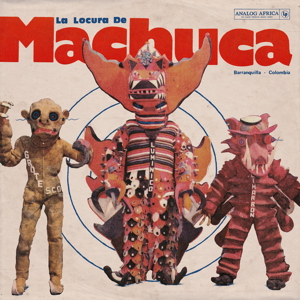
This gloriously weird compilation delves into the archives of Discos Machuca, a Colombian label specialising in the psychedelic dance music that emerged on the country’s northern coast when hugely popular Afropop club imports merged with the local Cumbia tradition. The result was a wild and singular Afro-Latin sound whose otherness, rawness and immediacy feels every bit as new and thrilling now as it must have done at the moment it was recorded.
BEN WATT: STORM DAMAGE

On Watt’s fourth solo LP, that very English sense of something simmering and seething beneath an ostensibly placid exterior – perhaps the defining quality of everything he and Tracey Thorn have done either together or apart – has never been more pronounced. These are songs whose power lies in their apparent restraint, in their lack of histrionics, in the way strong emotions push their way to the surface in little bubbles. It’s not a minimalist record at all, but it contrives to resemble one, because its many elements work on such a small scale. Grandeur would have stretched it out of all proportion. As it is, the damage comes from a storm in the teacup that is an ordinary life.
KAMAAL WILLIAMS: WU HEN

British jazz is very much on the up, producing remarkable and original music, as well as new stars, at a rate of knots – and none more remarkable or original than the second album from Peckham producer and instrumentalist Kamaal Williams. In the spirit of jazz-funk artists of 50 years ago, Williams pulls the street sounds of London – grime and garage in particular – into the orbit of cosmic jazz, labelling the result ‘Wu Funk’. Wu Hen is a stunning realisation of the idea.
WORKING MEN’S CLUB: WORKING MEN’S CLUB

It would be easy to sound retro – trad, even – when 40-year-old music is your template. But the band led by 18-year-old Sydney Minsky-Sargeant show that music needn’t be original to feel original. Not when it has so strong a personality. So yes, you can hear The Fall, A Certain Ratio, Soft Cell, Cabaret Voltaire, early industrial, and even – on the closing 12-minute epic, Angel – echoes of Television. What you don’t hear is a band in thrall to this past. Minsky-Sargeant’s deadpan voice and acrid, gripping songs, the quartet’s dynamism, above all, the atmosphere of the whole thing, the way it builds upon their galvanising live show, adds layers and depth and armour, then rolls over you on spiked tank tracks.
ZEBRA KATZ: LESS IS MOOR
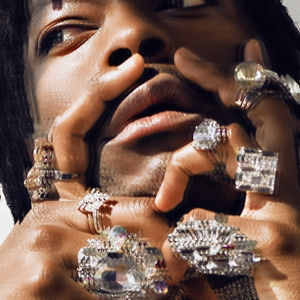
Seven years, it’s been, since Zebra Katz released Ima Read, his minimal, stinging, insinuating, claustrophobic debut track. Finally comes his debut album. It’s nothing if not incendiary, from its provocative title through to the often confrontational lyrics. Its drama does not manifest in fireworks, but rather in the sinister hissing of a very long fuse. Its key quality is tension. It holds the listener in suspense as it seethes towards a climax that never comes, with Zebra Katz’s voice muttering and writhing atop a dark, harsh electro-industrial sound reminiscent of Tricky’s post-Maxinquaye albums. Less Is Moor fleshes out the promise of that first, extraordinary single in a fashion as uncompromising as it is eerie, sibilant and lubricious.
|
|
|
|







